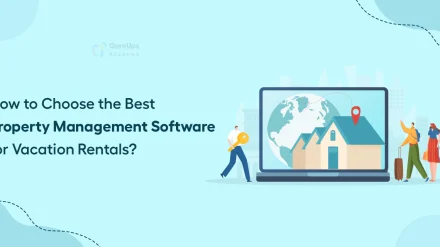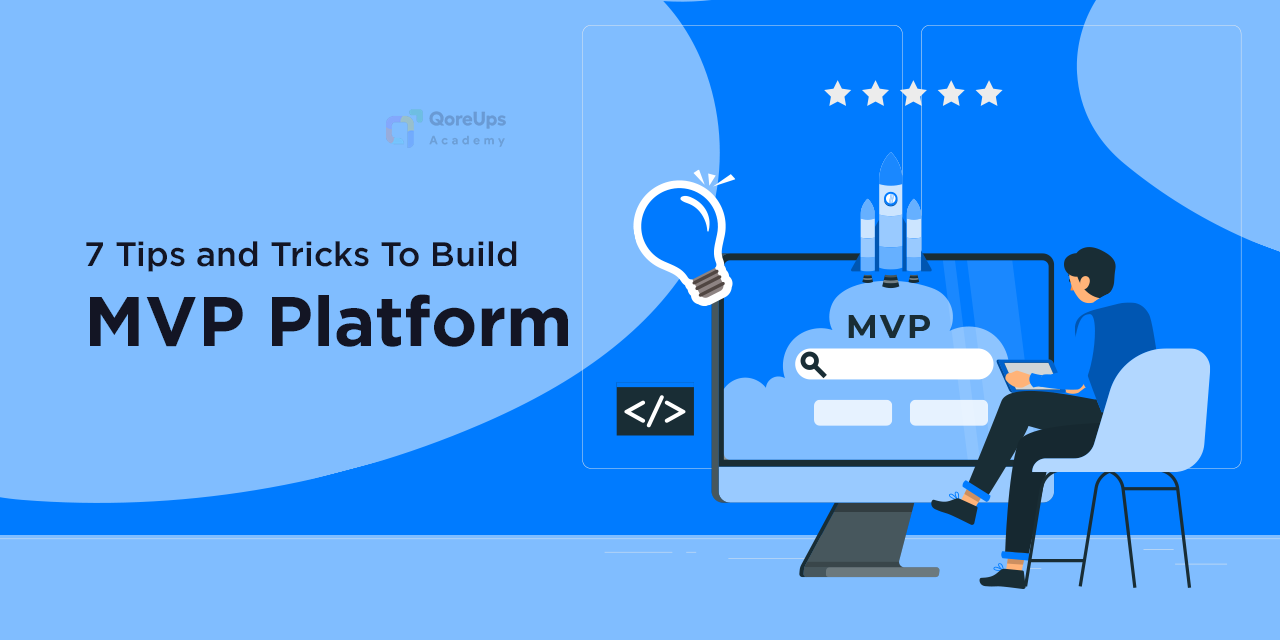Building a marketplace can be a lucrative business opportunity, but it requires careful planning and decision-making.
One of the key decisions is choosing how to build a marketplace.
Building a marketplace is an exciting endeavor that requires careful planning and execution.
A marketplace is a platform that connects buyers and sellers, allowing them to conduct transactions and exchange goods or services.
It can be a physical location, like a bazaar or flea market, or a digital platform like Amazon or Etsy.
To build a marketplace successfully, you need to identify a market need. Also, determine your target audience, develop a unique value proposition, and build a user-friendly platform.
You will also need to establish clear rules and policies for buyers and sellers, to ensure secure payment processing.
Also, implement effective marketing strategies to attract users to your platform.
What Is A Marketplace?
An exchange of goods, services, or information between buyers and sellers is known as a marketplace.
It can be a physical location, like a local market or shopping mall, or a digital platform, like Amazon, Airbnb, or Upwork.
Online marketplaces connect individuals or businesses, facilitating the exchange process by providing features such as listings, search and filter options, secure payment systems, and review mechanisms.
Marketplaces are generally divided into categories based on their business model:
- B2C (Business-to-Consumer) – Businesses sell directly to consumers (e.g., Amazon, eBay).
- B2B (Business-to-Business) – Businesses sell products or services to other businesses (e.g., Alibaba).
- C2C (Consumer-to-Consumer) – Individuals sell to other individuals (e.g., eBay, Craigslist).
Why Create A Marketplace?
Creating a marketplace can offer several benefits, both for entrepreneurs looking to start a business and for users who want a more convenient, organized platform for finding what they need. Here are some key reasons:
Scalability
Marketplaces can grow quickly as they attract more users. As buyer and seller networks expand, the marketplace’s value and market reach also increase.
Revenue Potential
Marketplaces can generate revenue through various models, such as transaction fees, subscriptions, listing fees, or advertisements. As the user base grows, revenue opportunities expand.
Lower Inventory Costs
Unlike traditional retail, a marketplace doesn’t need to maintain inventory. It serves as a facilitator, reducing costs and risks associated with stocking products or services.
User Convenience
Marketplaces streamline the buying and selling process, providing a centralized, accessible, and efficient experience.
They often include helpful tools like search and filtering, secure payments, and ratings and reviews.
Adaptable Across Industries
Marketplaces can be designed to cater to specific industries, from rental services to freelance jobs, making them highly adaptable to different business needs and consumer demands.
Creating a marketplace can therefore be a powerful business model, especially in today’s digital economy, where online transactions and peer-to-peer interactions are on the rise.

Ways To Build A Marketplace: Custom vs Clone Script vs SaaS
There are three major options to build a marketplace,
Building From Scratch
Building a marketplace from scratch involves starting with a blank slate and developing all of the necessary features and functionality from the ground up.
This option is the most time-consuming and requires a significant amount of technical expertise.
However, it offers complete control over the marketplace’s design, features, and functionality.
It can be a good option for those with a specific vision for their marketplace and who want complete control over the final product.
Using Custom Script
Using a custom script involves starting with pre-built software that you can modify to fit specific requirements.
Custom scripts are often used for building a marketplace since they provide some level of customization while being less time-consuming and less expensive than building from scratch.
It can be modified to fit specific needs, such as adding or removing features or changing the user interface.
Opting For A SaaS Marketplace Platform
Opting for the SaaS marketplace platform involves using pre-built software solutions. Where your provider will handle the hosting and maintenance of your site.
SaaS platforms are often the quickest and easiest way to build a marketplace.
This is because they provide a ready-to-go platform that can be customized and configured to meet the specific needs of your marketplace business.
SaaS platforms are the best for those who want to get their marketplace up and running quickly without having to invest in a lot of technical expertise or infrastructure.
They are also good options for those who want a more flexible marketplace from MVP to launch fully.
Each option has its own pros and cons, depending on factors such as budget, technical expertise, and customization requirements.
However, there are several reasons why the SaaS marketplace platform is the best choice.
In this article, we will explore why you need to choose a SaaS marketplace platform over a custom script and build from scratch.

Why Choose SaaS Marketplaces Over Others To Build A Marketplace
There are many reasons why you need to opt for a B2B SaaS marketplace to build a marketplace over others.
Cost-Effective Option To Build A Marketplace
SaaS Marketplaces
SaaS marketplaces are cost-effective because they eliminate the need for businesses to invest in and maintain their own IT infrastructure.
Also, offers a subscription-based model with flexible payment options.
They share maintenance costs among users, require no installation or configuration costs, and provide easy integration with existing systems.
All these factors can result in significant cost savings for businesses.
SaaS marketplaces have a low monthly subscription fee starting from $49.
Which can be adjusted based on the number of users, making it a more attractive option compared to others.
QoreUps is a b2b saas company, that offers their SaaS Based platform at the starting rate of $49.
Build A Marketplace From Scratch
Developing and running a marketplace from scratch will cost approximately $75,550 to $2,20,500
- Planning and Design: $5,000 – $15,000
- Front-end Development: $20,000 – $50,000
- Back-end Development: $30,000 – $100,000
- Database Integration and Payment Gateways: $10,000 – $30,000
- Testing and Quality Assurance: $5,000 – $15,000
- Marketing and advertising: $500 to $10,000
- Hosting and maintenance: $50 to $500
- Payment gateway integration: 1.5% to 3% per transaction
Buying A Custom Script
Creating and running a marketplace with a custom script will cost approximately $50,000 to $500,000
- Design and development: $5,000 to $150,000
- Technology stack: $5,000 to $30,000.
- Hosting and maintenance: $50 to $500
- Payment gateway integration: 1.5% to 3% per transaction
- Marketing and advertising: $500 to $10,000 per month
Time-Saving
Building From Scratch
Building a marketplace from scratch can take anywhere from six months to a year or more, depending on the complexity.
This estimate assumes that the team has experience with marketplace development.
And has the necessary resources and technology stack to build the platform.
Custom Script
Using a custom script can reduce development time compared to building from scratch, but it still requires customization and integration.
The time it takes to build a marketplace using a custom script will depend on the script’s complexity. Also, how much customization is needed?
Generally, it can take one to four months to customize the script and integrate it with the required functionalities.
SaaS Marketplace Platform
Using a B2B SaaS marketplace platform is the fastest way to launch a marketplace.
A SaaS marketplace platform offers a time-saving development option by providing a pre-built and ready-to-use infrastructure for developers and businesses.
Generally, it can take just a few minutes to launch a marketplace using a SaaS platform.
Additionally, ongoing maintenance, updates, and security concerns are handled by the SaaS provider.
Further saving time and resources for the developers. This enables them to concentrate on creating a high-quality product or service for their customers.
Flexibility
The SaaS marketplace is highly flexible and customizable.
They allow businesses to use them for a wide range of marketplace models, including rental, selling, service, and sharing economy marketplaces.
This flexibility is possible by the software’s modular architecture, which enables businesses to add or remove features as needed to build a marketplace with a tailored solution that meets their specific requirements.
By using the same software solution for different types of marketplaces, businesses can save time and resources, and launch new marketplaces more quickly and efficiently.
These are not possible when you build a marketplace with a custom script or build from scratch.
Scalability
The SaaS marketplace is designed to be scalable, which means it can handle a growing number of users and transactions without needing to upgrade or modify the software.
This is particularly important if you anticipate rapid growth or have a large user base.
Data Analytics
It is essential for businesses looking to optimize their operations and make informed decisions.
The SaaS marketplace comes with built-in data analytics tools that allow businesses to track user behavior, sales, and other important metrics.
For example; Form building is one such data analytic tool to capture user details. Right forms make a big difference.
Building powerful forms with conditional logic, payments, generation of reports and the automation of workflows ensure the smooth execution of any business like Jotform.
Business apps or marketplace should be integrated with the forms to automate the workflows in real time.
With these tools, businesses can gain valuable insights into how users are interacting with the marketplace, which products or services are selling well, and where there may be room for improvement.
You can use this information to optimize the marketplace, improve the user experience, and increase revenue.
Security
The SaaS marketplace has a robust security system that provides users with complete security over their data.
For example, QoreUps has an expert team to manage the security of the software. Our team will regularly update the software components, conduct regular security audits, and implement appropriate security protocols for data storage and transmission.
Whereas in a custom script, you have to maintain your software security.
There is a high chance of not using industry-standard security protocols and may overlook important security considerations, leaving the marketplace vulnerable to attacks.
Ongoing Support
The SaaS marketplace offers ongoing support, including maintenance, upgrades, and technical support. This can save time and resources that you would otherwise need to devote to maintaining custom software.
A competitive market, feedback from customers, and the experience of serving a variety of industries compel companies in the B2B SaaS marketplace to constantly upgrade their software.
Accessibility
With SaaS marketplace software, you can access your marketplace from anywhere with an internet connection. This means you can manage your business on the go.
Mobile Responsive
A SaaS marketplace is more likely to be mobile responsive than a custom script.
The SaaS marketplace was built with mobile responsiveness in mind, while custom scripts may require significant modifications or updates to ensure mobile responsiveness.
The SaaS marketplace is designed to adapt to different screen sizes and resolutions, provide a seamless user experience across different devices, and have dedicated support teams to help with any mobile responsiveness issues.
You may ask for the custom script to have a mobile app.
That’s right but along with the website development you have to pay for mobile apps and you have to think about the security, update, and maintenance for the mobile app too.
Reduced Risk When You Build A Marketplace
When developing custom software, there is always a risk that the software may not work as intended or may have bugs that you need to fix.
This can lead to delays, additional costs, and frustration for both the development team and the end users.
On the other hand, the SaaS marketplace is pre-built and has been tested by many users.
This means that they have already gone through a rigorous development and testing process.
Also, any bugs or issues have likely been identified and fixed before you start using the software.
This reduces the risk of issues arising during the development and deployment of the marketplace.
Easier To Use
The SaaS marketplace has intuitive user interfaces that are easy to understand and navigate, with clear and concise instructions and prompts.
This makes it easier for users to quickly learn how to use the platform without needing extensive training or technical expertise.
In contrast, custom software can be more challenging to use because it is tailored to the specific needs of the business and may require specialized training for users.
This can be time-consuming and costly, especially if the software is complex or has a steep learning curve.
Reduced Stress
Designing a marketplace from scratch/ customizing the ready-made script can be a daunting task that involves managing stress and building consensus within the organization.
Customizing an application can add complexity to the entire process, making it less user-friendly.
On the other hand, the SaaS marketplace has experience working with businesses from diverse backgrounds, enabling them to create features and workflows that can meet the needs of most organizations.
Among the sea of SaaS marketplace solutions, QoreUps emerges as the top choice marketplace builder. Let’s see the reason behind this.

Why You Should Choose QoreUps To Build A Marketplace
Top 5 reasons why QoreUps is the best SaaS platform to build a marketplace:
User-Friendly Interface
QoreUps offers an intuitive and easy-to-navigate interface, allowing both entrepreneurs and users to quickly get started with minimal technical expertise.
Scalable Solutions
Whether you’re starting small or aiming to grow rapidly, QoreUps supports scalable infrastructure that adapts to your business as it expands, handling increased traffic, transactions, and users without hassle.
Comprehensive Features
QoreUps provides a wide range of pre-built features essential for running a marketplace, from payment integration and booking systems to customer support and marketing tools, all in one platform.
Cost-Effective
With a subscription-based model, QoreUps eliminates the need for heavy upfront investment, providing a cost-effective way to build and maintain your marketplace without high development or maintenance costs.
Robust Security & Ongoing Support
QoreUps ensures the safety of your marketplace with built-in security features and offers continuous technical support, keeping your marketplace secure and running smoothly around the clock.

Conclusion
In conclusion, when building a marketplace, there are three options to consider: using a SaaS platform, custom script, or developing from scratch.
A SaaS platform is a good option for those who want to quickly build a marketplace.
It requires minimal technical expertise since it provides pre-built features and functionalities.
However, it may be limiting in terms of customization and scalability.
Building a custom script allows for more flexibility and customization but requires more technical expertise and time to develop.
It is a good option for those who want to have more control over their marketplace and have unique requirements.
Developing a marketplace from scratch provides the most control and flexibility but is the most time-consuming and expensive option.
It is ideal for those who have specific requirements that cannot be met by existing solutions or who want to build a marketplace that stands out from the competition.






